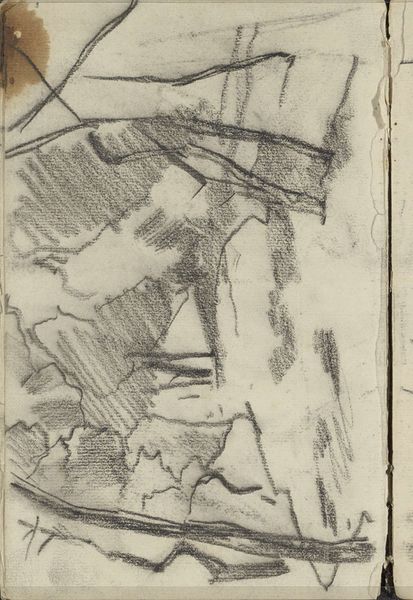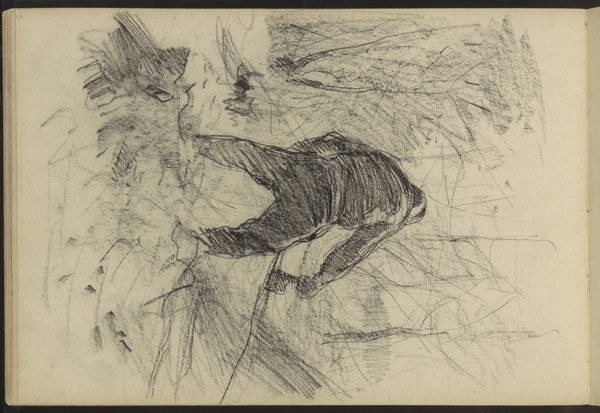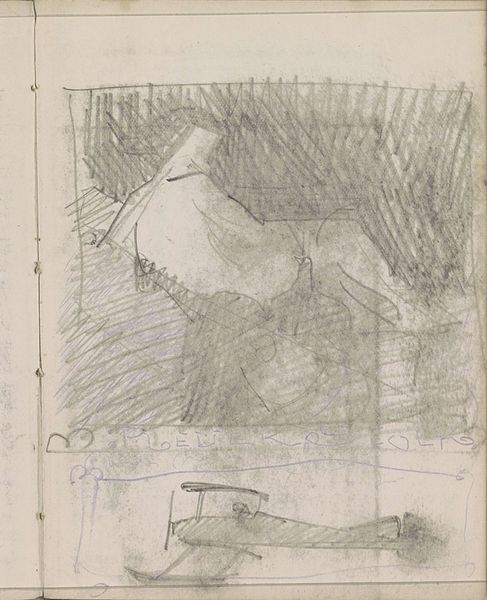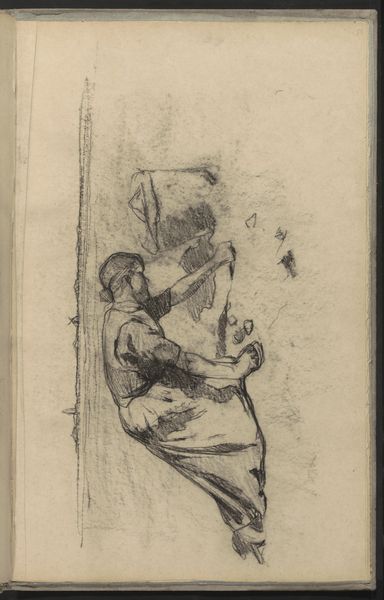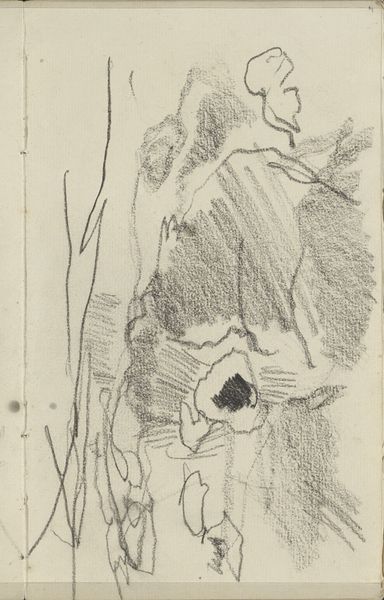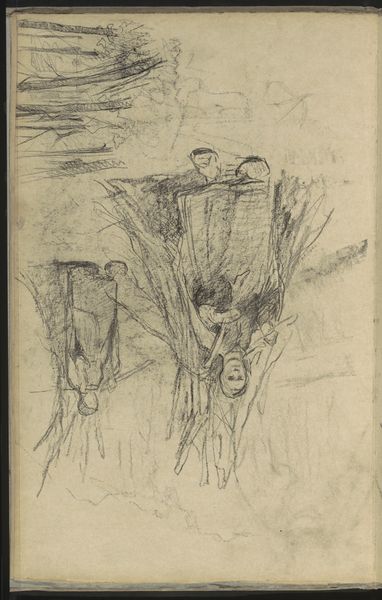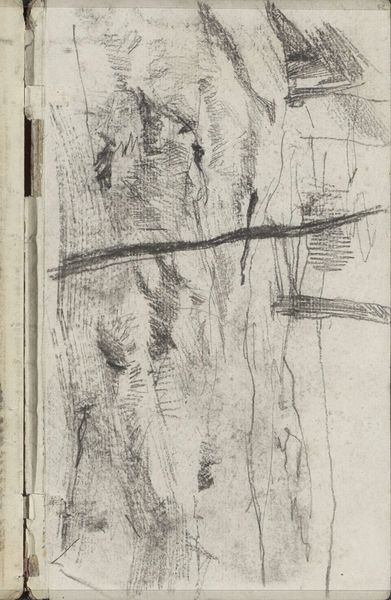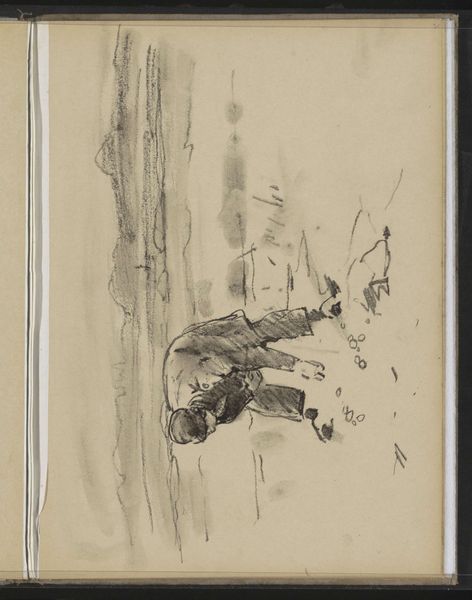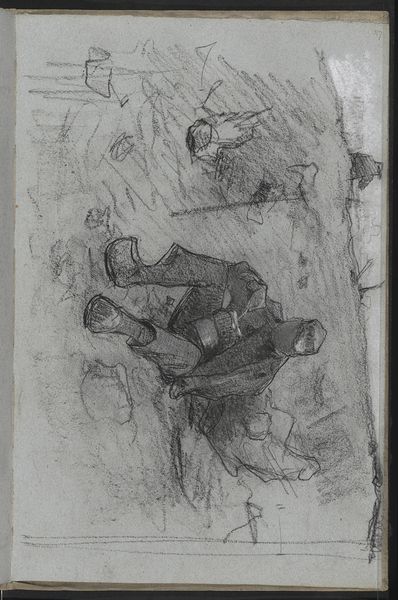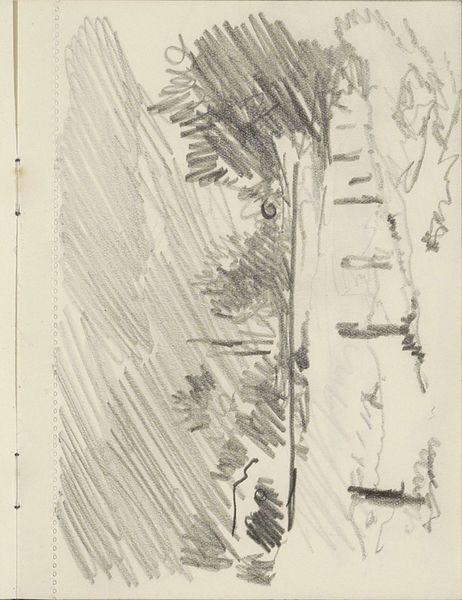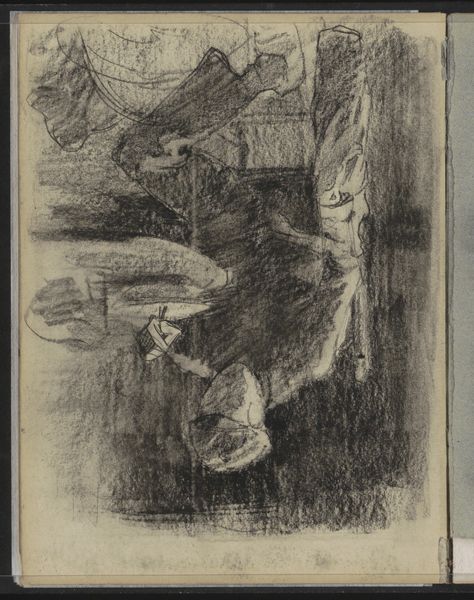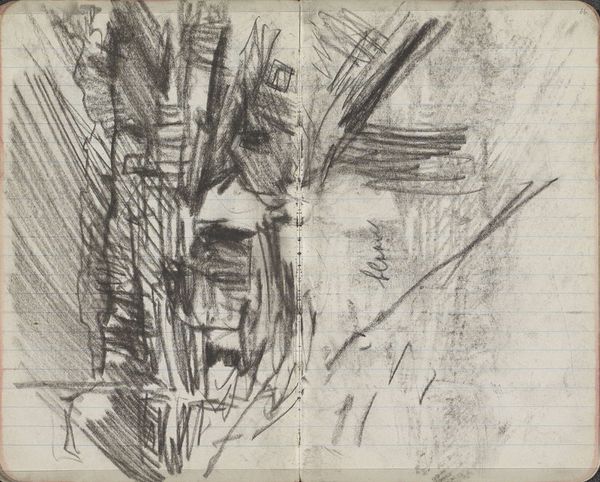
drawing, paper, charcoal
#
drawing
#
landscape
#
figuration
#
paper
#
charcoal
#
realism
Copyright: Rijks Museum: Open Domain
Curator: It has this incredible melancholy mood, doesn't it? So somber... Editor: It certainly does. We’re looking at Willem Witsen’s, "Landscape with Digging Heath Farmers," a charcoal drawing on paper, dating from about 1884 to 1887. It’s part of the Rijksmuseum collection. The scale emphasizes that solitary figure in what I imagine as cold weather conditions, so a somber read is warranted. Curator: I think it’s more than just the weather and solitary figure creating that feeling. There's an element of… I want to say ancient ritual here. The heavy strokes of the charcoal, the earthy tones even without color, the way the figure blends with the land. It all evokes something primeval. What would the labor conditions of these workers at this moment in history reveal to us? Editor: That's a fascinating read on it! Labor during this time in the Netherlands was transitioning rapidly due to industrialization, though these rural communities certainly maintained agricultural legacies and identities. This piece likely depicts seasonal peat harvesting that generated fuel during winter months for additional income. I think the harshness and intensity you’re sensing come from a brutal economic reality, depicted using realism as a style. The symbolism seems embedded in the scene rather than something imposed upon it. Curator: I see your point. Perhaps it is less about a specific ritual and more about a timeless connection to the land. And even without specific colors, Witsen captures the feeling of the soil, of the cold, almost like memory of how essential hard labor of working men impacts land, nature, and overall sense of homeland. The man with his shovel could just as easily be a sower of seeds, representing future of prosperity and hope, which balances any cold or harsh implications. It resonates, historically, but also speaks to broader cycles. Editor: Yes, I appreciate that interpretation. It shows how a seemingly straightforward depiction of labor can tap into deeper cultural narratives of our human relationship to nature, a history both shaping and shaped by those interactions. Curator: Exactly. Thanks, it shifted my perspective significantly, making me wonder if there isn’t something subtly archetypal at play that is a signifier of historical continuities. Editor: And for me, considering Witsen's social milieu enriches how I see his observations—turning a scene of common labor into something genuinely contemplative about the landscape of people and place.
Comments
No comments
Be the first to comment and join the conversation on the ultimate creative platform.

